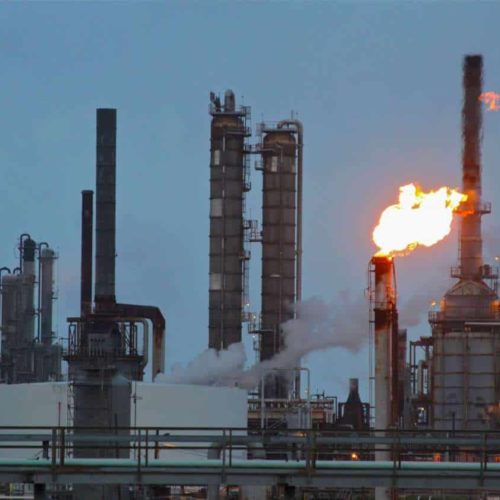Introduction
A new method of estimating air pollution from flares at refineries and chemical plants, released under court order by the U.S. Environmental Protection Agency this week, could mean that earlier tallies substantially undercounted the tons of chemicals pumped into communities.
Flares are used to burn off gas, a process that releases some volatile organic compounds — VOCs, which can harm health and contribute to lung-damaging smog. The Environmental Integrity Project, an environmental law group that sued to press the EPA to reconsider its emissions figures, said the new calculations suggest that factory flares likely belch four times more VOCs than previously thought.
The EPA did not release an analysis of how the new guideline changes the pollution picture. Officials there cautioned that previous national tallies included numbers from firms that used their own estimation methods, not just those that used the EPA calculation. But the new guideline is about four times higher than the old one, the agency confirmed — and because the old method also counted some non-VOC substances, the real gap is even larger.
Environmental advocates say they hope the change will yield information that more accurately reflects what’s going into the air. Many companies estimate their emissions rather than measuring them directly, the Environmental Integrity Project said.
The group said it calculated that the annual health costs imposed by refinery flare emissions alone likely tops $120 million in medical bills and other expenses — most of which comes from additional pollutants that had not been previously accounted for.
“By recognizing that there are much higher emissions and health impacts from flares, I think there will be much more priority put to finding ways to reduce these emissions,” said Sparsh Khandeshi, an attorney with the Environmental Integrity Project.
The group’s lawsuit — on behalf of several Texas and Louisiana organizations — prompted a court-ordered deadline of April 20 for the EPA to reconsider its decades-old emission guidelines. The updated figures, issued late that evening, suggest that flares from U.S. refineries alone are likely sending about 50,000 tons of VOCs into the air each year, rather than the approximately 13,000 tons the EPA calculated last year, the Environmental Integrity Project said in an analysis released Tuesday.
The American Chemistry Council, which represents the chemical industry, declined to comment on the new guidelines or their implications. The American Fuel & Petrochemical Manufacturers, another trade group, did not respond to requests for comment.
Advocacy groups involved in the lawsuit over the calculations hope the end result will be reduced emissions. Companies could recycle more gas, putting it to use instead of flaring it, they say.
“Members of industry have a saying: ‘What gets measured gets improved,’” Adrian Shelley, executive director of Air Alliance Houston, said in a statement. “Only by accurately measuring emissions can we reduce pollution and protect public health.”
The Center for Public Integrity in recent years has extensively investigated air pollution, finding hot spots across the country and smog in unexpected places.
Flares aren’t limited to chemical plants and refineries. They’re also used at oil and gas drilling sites across the country. But the EPA said in a statement that its new guidelines shouldn’t be applied to production sites because those flares can differ from ones used by manufacturing plants — and because emission-control requirements are looser for some production sites than for refining and chemical manufacturing facilities.
Juan Parras, director of the Texas Environmental Justice Advocacy Services, one of the nonprofit organizations included in the EPA lawsuit, said the ideal would be zero emissions — for companies to capture all their waste.
Until that’s possible, he wants to see reductions. The health of people living in nearby communities depends on it, Parras said.
“We have never said that to change a process or a system of operation is not costly — certainly, it’s costly,” he said in an interview. “But we also believe they make enough profits and enough money to fix up what they’re building, and they can build it a better way.”
Read more in Environment
Danger in the Air
Clean-air advocates upset with EPA ozone decision
Change in air pollution standards also irks manufacturers
Environment
How we acquired and analyzed data for ‘Environmental Justice, Denied’
Our receipt of EPA documents under a Freedom of Information Act request was just the beginning of a lengthy process


Join the conversation
Show Comments